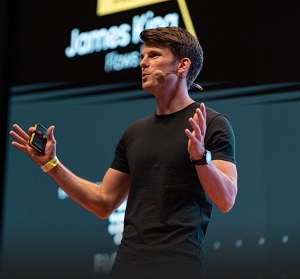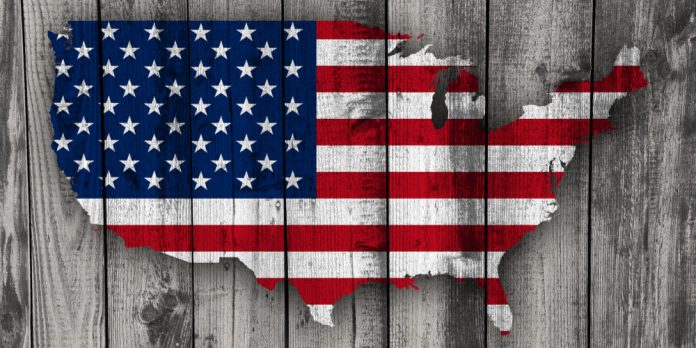In this roundtable, the participants discuss some of the challenges operators and suppliers face when entering a new US market, and how they go about driving brand awareness – both among players and in the case of suppliers and operators.
Taking part in this roundtable is Marina Bogard, Managing Director US at Betsson Group, James King, CEO of Flows, Allan Petrilli, VP of Sales and Growth at Intelitics, and Jon Bowden, CMO at PlayStar.
SBC: What are the key challenges operators/suppliers face when entering a new market and driving brand awareness? Can you give some examples?
Jon Bowden, CMO at PlayStar: The main challenge is standing out from the competition. Take the US, for example. Right now, there is a huge amount of brand investment taking place, so when it comes to making your debut you need to stand out to potential new players and you’re not going to achieve that by doing the same as every other brand in the market.
At PlayStar, we’ve looked to offer something different and always ask if what we are doing is better than what is currently available in the market. And that is not just around driving awareness, but around developing true brand preference. To do that effectively, customers need a positive experience and one they can’t get elsewhere.

Marina Bogard, Managing Director US at Betsson Group: In the US market and from a sportsbook perspective, operators and suppliers will face various challenges in driving brand awareness. Though the market is in the early stages there are many players in the market and rising above the noise of those who came in early will be a challenge.
Marketing and acquisition costs continue to increase with elusive margins. Nobody is in profitable territory right now so the ability to sustain operations while building out the market will be key. Some of the major and more recognizable brands have spent millions of dollars in advertising and acquisition costs and have not reached profitability yet. These are the brands that operators entering the market will be competing against.
At Betsson, we recognize the challenges and understand the level of commitment that it takes to build out a brand in the market as we have had close to 60 years of experience in building brand awareness through geographical expansion as both a supplier and operator.
James King, CEO of Flows: Competition – A big challenge will always be competition, especially in markets that have incumbents with a strong brand presence (even physical ones with land-based properties). It seems most take one of two routes to mitigate this, the first, just spend, spend and spend until you buy enough market share to be considered a leading player in that market (we’ve seen this in the US for example).
The second route and perhaps the best for longevity and a more sustainable financial model is to differentiate your offering, the way you engage with customers, and even the type of customer you target. That’s why it’s really important to think about how you position yourself and how you present your core marketing message.
Building trust – Building trust and loyalty at speed is one of the most important factors for any business to succeed in a new market. Once you build that trust, it’s much easier for you to build a loyal customer base. When entering a new market, it’s much harder to build that trust as you are essentially ‘new’, which makes it harder for potential customers or partners to associate your brand with a good experience.
To build that trust as mentioned above, it’s important to think about your core message, how you are communicating that message as well as the initial experience and journey you are creating for every new customer.

Allan Petrilli, VP of Sales and Growth at Intelitics: If the market really is brand new and wasn’t previously operational in a ‘grey’ sense, then operators and suppliers are starting from scratch. For operators, one of the greatest challenges to overcome is their marketing budget as most will be competing with established media powerhouses.
Most media companies, and tier-one operators backed by billion-dollar-budgets, are happy to spend their way to market share and brand awareness in the early days, even if it means they are not profitable for many months or even years. For smaller operators, they need to strike the right balance between spending smartly and carefully to achieve a return on their investment while also being able to leverage the first-mover advantage, which often requires big spending to fully maximize.
Education is also key here. Depending on the maturity of the market, operators need to educate players on the products and experiences they offer, as well as other aspects such as betting terminology. Schooling the market is all part of the job of an operator.
For suppliers, there are limited opportunities with tons of competition. That is why it is important to build solid relationships quickly – you are competing with new suppliers in the space as well as existing ones in the same market that have served other industries. It is also worth mentioning licensing – if permits are required it can seriously delay your entry to the market.
SBC: Is this even more challenging for entirely new brands? Or does being the new kid on the block have its upsides? If so, what are they?

Bowden: It is a big challenge for new brands as those that are established have some form of legacy they can lean on, whether that’s a brand name or a land-based arm of the business in operation. With this, there’s an advantage in that they have something to build on and the ability to leverage an existing base to understand more about their players or cross-sell them to their online products.
When you’re going from a standing start you have no awareness so it’s even more important that you do something different and something that will resonate. On top of this, you need a great player experience from day one.
Of course, there are some advantages to being completely new in that you can start with a clean slate with no negative noise around the brand. You can also implement the best market solutions, especially when it comes to third-party providers.
Bogard: It is always challenging for entirely new brands to enter markets, regardless of the industry, but it does have upsides, too. New entrants have a lens on what is or is not working for current operators and suppliers in the market and this creates an opportunity to refine those areas to better serve their player base.
In addition, new entrants have the ability to integrate new technology and not be encumbered with potential older infrastructure and technology that cannot pivot as easily as cutting-edge solutions. Researching the market, technology, and customer needs also provides new entrants the opportunity to differentiate themselves.
We are bringing the Betsafe brand to the US market as an operator with our recent B2C launch in Colorado and as a supplier through our B2B offering. We will be bringing unique features and functionality to the market through both of our business units.

King: I would say it depends largely on the business offering and how you position yourself. If you are a unique, innovative company that is set out to solve some key industry issues, then the chances are you have a high competitive advantage.
It also depends on how you tell your story, how you sell yourself and what you show to your audience. It’s always better to be a bit different, to have that key USP, and really show what you can do for your potential customers and why they should care.
Being new allows you the chance to position yourself in a way that is different, to say what others are not saying, and to solve the issues that your direct competitors are not, it allows you to have a fresh perspective on things from the start.
Petrilli: It is both. Existing brands generally have a lot of work to do when it comes to assimilating their product into a new market. But they do have a base to work from and this can be an advantage as well as a disadvantage.
For some, assimilating their product into a new market is easy but for others, the changes required to do this successfully require some serious heavy lifting and can lead to internal disagreement and at times chaos.
New brands and suppliers, on the other hand, have the ability to build a product for that specific market and can therefore deliver solutions and services that are more localized and bespoke, and this can give them a strong competitive advantage.
SBC: How do operators/suppliers go about driving brand awareness? What platforms/tools/etc do you use?
Bowden: It’s about building out a clear proposition and this touches on a wealth of areas in the business from how you deliver this through product and experience to how you market and advertise this to players.
Taking PlayStar as an example, we have looked to deliver a unique experience to every player, and we will ensure from a brand awareness POV that firstly we get their attention and that we have some strong techniques to cut through the noise. From there it’s about ensuring that we deliver on our promise so that initial interest turns into preference and loyalty.
Bogard: The majority of operators and suppliers utilize digital marketing campaigns to drive awareness given the nature of the mobile applications that provide access to sports betting and casino. This includes the traditional type of digital campaigns such as banner ads, social media, and direct email outreach.
In addition, we are seeing offline campaigns as well including outdoor billboards, print media, direct mail, and of course, television ads. Many operators build awareness through sports organization partnerships and affiliate marketing partners. These campaigns are in conjunction with various promotional offers to engage players and build loyalty through ongoing promotions based on local, national, and seasonal events.
We will start seeing more personalization of promotions and targeted marketing as operators and suppliers get more sophisticated in their approach. We will certainly be utilizing all of these approaches as we build brand awareness with our Betsafe customers in Colorado and our B2B business brand across North American markets.
King: Ensure your content is relevant. If for example, you have a blog, make sure that the content you provide is relevant and offers some guidance.
That is what we try to do at Flows with our ‘Flow of the week’ for example, where we dive into key industry problems weekly and explain how flows can help solve these issues along with detailed instructions on how to build particular flows to help to streamline your business, such as creating a personalized customer experience, increasing retention with tailored messages, and create a safer gaming environment.
We also talk with as many of the key industry publications as we can, ultimately, they are supporting the industry and if your product is supporting the wider success of the industry like Flows is, then I think you will find support there too.
Petrilli: This is different for operators and suppliers. For operators, we have seen two different approaches to date. Some have dug deep into their pockets and rolled out multi-million-dollar above-the-line campaigns in each of the markets they have entered, while others have taken a more calculated, ROI-driven approach with the goal of being profitable quickly. Those taking the former approach invest more heavily in TV and radio while the latter leverage channels such as paid media and affiliates.
What has been interesting to observe is that some operators have opted to go hyper-local with event-based marketing – depending on the size and type of the market, this could prove to be very effective.
From a supplier perspective, a lot can be accomplished through strategic partnerships or landing a deal with a big player or flagship brand in the market. Nothing validates a supplier business like having a tier-one operator sign up for its products or services. Social media and in particular LinkedIn and LinkedIn ads are also effective at generating awareness of your business and the solutions you offer.
SBC: Does brand awareness in one state carry over to another?
Bowden: For some of the bigger brands, this will happen and will help them launch in new states as the brand is already a known entity to an extent.
Saying that, with PlayStar, we don’t envisage a huge level of carryover in the early days (although we do expect some) but we will have findings on the effective ways to land the brand faster for when we enter additional states. That will of course build and improve over time.
One thing we’re also keen on is a local element to our proposition, so that is a huge opportunity to offer something different in every state we go live in.
Bogard: Yes, brand awareness does carry over from state to state, but it is important to also build awareness around a community-specific to each state. States have unique characteristics and cultures, so it is imperative to not only build general brand awareness but cater to the audience and demographic in specific states.
For example, Colorado is 33% Hispanic so as we build awareness of the Betsafe brand in the state, we need to ensure we are creating a community with such a strong and populous demographic. Many demographics are underserved and underrepresented and that is certainly an opportunity for operators to create brand awareness and loyalty.
When operators use us as a supplier for their sportsbooks, we can also assist them in developing marketing programs to build out their brand in specific markets.
King: Ultimately this depends on your product, a SaaS tool like Flows is agnostic to state or country and its use cases are prevalent throughout the industry.
Yes, you should always be thoughtful of your audience and in turn tailor content depending on what your offering is and who your target audience is in each instance. While your main message might be the same, there should always be a bit of personalization that takes into consideration key factors such as the regulations and also the demographics of that state.
Petrilli: This really depends on whether the brand is marketing at a state level or national level. The US market is interesting given how many brands are marketing at a national level, so I would say that overall awareness is being driven by this and not by state-specific marketing carrying over from one state to the next.
We are seeing a similar thing in Canada – even though Ontario is the only regulated province, operators are marketing their brands nationally.
SBC: Is there a lack of marketing tech in the US market? What does this mean for operators? Are they having to develop their own platforms and tools?
Bowden: I wouldn’t say there’s a lack of marketing tech per se, but how to implement and use tech effectively is something that operators have a huge opportunity around. Coming into PlayStar and starting from scratch was a huge benefit as we sought out the best tech in the market to enable us to market and track efficiently whereas other businesses are dealing with legacy tools, and especially when you’re live, it’s painful to make the switch.
In regards to proprietary vs non-proprietary, it really depends on the scenario and business itself. From a cost and ownership perspective, it can be a benefit to build and deliver in-house but you can also sacrifice speed to market, which is super key in the US. It’s often more beneficial to find a third party that can deliver what you need and gets this out to players fast.
Bogard: There are many marketing platforms available for operators to utilize if they do not have the resources or desire to build it in-house. These are standard marketing tools that have been around for some time.
As operators look for growth and retention within regulatory confines, they will have to either create or find third-party applications that provide unique experiences. These might include peer-to-peer wagering, personalization technology through machine learning that specifically provides odds, for example, that the player is more likely to bet on, and very direct and specific targeted messages that are relevant to the player.
It is a wide-open field and, in my opinion, those that develop marketing tools that lower the cost of acquisition and create loyalty will be the winners. We are data-driven and have a full-stack marketing tech setup today, which includes a DMP and brings all our marketing data from all channels together with customer preferences of sports and bet offerings.
This allows us to tailor marketing campaigns that are optimized based on the entry point of new customers, alongside being highly relevant in our activation and reactivation campaigns towards our existing customers.
King: I think there is a lot of marketing technology out there but believe there is a lack of modern marketing technology that can agnostically speak with all other systems used by operators and suppliers. A ton of technology has been built on old tech stacks with legacy systems attached to them which hinders their ability to perform in a modern tech environment.
For operators, it means making some bigger decisions around their current tech stacks and systems. They need to assess how they currently process data and then how they want to process data in order to be able to use the most modern tools and technologies.
At Flows, we enable our partners to build features and applications that are real-time responsive (and can be triggered down to a gamespin level) but this requires our partners to be able to send us information in real-time in order to get the most out of the tool. And today, not everyone is equipped for this yet. To get there means a bigger re-write or move to a new, more modern PAM, so in short. For operators, it means they’ve got some big decisions to make in the coming months to stay competitive.
Operators are having to think smarter, especially about things such as automating processes so they can streamline their operations. Ensuring they have aspects such as real-time data in place as mentioned to help them to create and maintain a more responsible gaming environment is particularly important today, as is personalization. There is definitely more need now than ever before for faster, more efficient tools. Investing the time, technical ability, and costs to build this is not something that is feasible for everyone and so there is definitely a growing demand for agnostic tools like Flows.
Flows is an agnostic, no-code innovation platform that enables igaming companies to easily automate their digital processes, build digital features, and produce applications. With Flows, organizations have more ownership of their product roadmaps, can integrate with any app or data source quickly, coordinate multiple systems, and automate workflows in real-time without the need for code or any coding experience.
Flows not only helps your business to become innovative and efficient but also flattens the skill curve while eliminating unnecessary extra costs.
Petrilli: I obviously have a biased opinion here given our large focus on growing our footprint in the US and Canada. But yes, I would say the market is underserved when it comes to modern marketing technology and that is why we launched Intelitics to fill this void.
Today, many US brands are using fragmented tech stacks and are even reporting to marketing partners via daily spreadsheets. This puts them at a huge disadvantage. Marketers need access to granular, real-time data to run effective campaigns, but this seems to have taken a backseat with the vast majority of operators.
Operators are under tremendous pressure to be among the first movers in new states, so a lot of resources and focus is put into that and not into bringing in new products to help them increase ROI on marketing spend.
I expect this to change as new state launches slow down and operators continue to come under more pressure to spend profitably and not like there is no tomorrow.
SBC: For suppliers looking to engage with operators, what does a comprehensive marketing strategy include and how does this encompass social media?
Bowden: A comprehensive marketing strategy covers a huge amount, from brand positioning to the specific strategies for every single acquisition and CRM channel. Social media is certainly a key part of any marketing strategy, and a comprehensive social strategy will not only promote the brand effectively but is also an extension of the brand’s tone of voice and persona, as well as a chance to engage through content. Moreover, it’s often the first port of call for customer service.
For suppliers looking to engage with operators, I would say find something that operators can’t do themselves and expose the value. There’s a wealth of things we’d all like to do in-house, but down to several factors, such as the complexity of running it this way, third parties can plug these gaps. Social media is a good example of an ever-changing landscape where there are always new opportunities and tactics to explore.
Bogard: For Betsson from a supplier perspective, we engage with and market to operators through not only attendance at various industry trade shows and industry publications, digital and print, but mainly through direct contact, which is proving to be the most productive and successful for us. We demonstrate our capability through our B2C operations and in the US, we are doing that through Betsafe in Colorado.
Our marketing approach emphasizes the benefits that we can provide operators interested in launching into the sports betting market with a turnkey solution. We also offer to support them through our 59 years of experience and some of our trading strengths include a data-driven approach, history of processing large volumes, experience in delivering a localized, configurable offering, top third-party providers for premium solutions, and a full, flexible, array of managed service offerings and much more.
Social media is certainly a part of the overall marketing strategy but in a targeted, industry approach specific to the audience. Showcasing the Betsafe B2C operations through social media is an opportunity to build brand awareness and build credibility for potential B2B partners.
King: Ideally a cross-channel strategy that focuses on content marketing with a strong focus on thought leadership to ensure that you are giving value to the audience. That coupled with a varied digital strategy focusing on key industry media, your own social media, and of course attending live events.
Live conferences and events still generate a lot of value within the gaming space, a value that is not easy to replicate via digital in the same way. We are still very much a social industry where face-to-face meetings, presentations, and live panels really matter.
Social media is of course one of the most powerful advertising platforms we have and it’s every bit as important for B2B as it is for a B2C audience. I think the key is how you use it, it’s important to make sure that the content you are outing out there is varied and relevant to your target market.
Petrilli: First, you need to really understand the problem that your product solves. This is a very competitive and cluttered industry, so you need to be crystal clear as to why the product, service, or solution that you offer is unique or better than anything else in the market.
Getting out and meeting clients at industry conferences is key to this and so too is a strong mix of content marketing and paid media. But this needs to go beyond LinkedIn and that is why it is vital that you know the specific audience you are targeting and where their attention can be found. That is the only way to get in front of them.
SBC: Anything else to add?
Bowden: Just that awareness isn’t the hardest metric to move (even though it’s certainly not an easy job). Awareness can come from the market itself and that can educate potential players. The difficult brand metric to really increase is the brand preference, so it’s driving awareness through the fact players are having a great experience, making you the go-to brand around your proposition.
Bogard: This industry is in its infancy in the US with tremendous opportunity on the table. I expect to see more innovation over the coming years and technological advancement through the use of machine learning and artificial intelligence, for both the front-end side of the business but also in streamlining the back-end and back office.
ML and AI tools that provide efficiency, optimization, and automation for risk management, fraud detection, responsible gaming, odds making, onboarding, and KYC for example will provide a richer experience for operators and players. Innovative and disruptive technologies that improve profitability and create rich and personalized user experiences will also be extremely successful.















